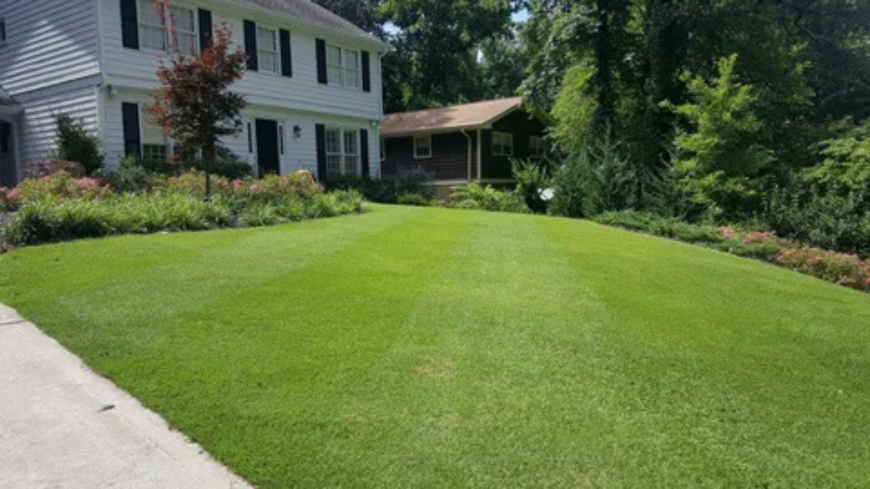What's the Best Way to Control Weeds Without Killing Your Grass?
Learn natural and effective ways to remove weeds without harming your grass. Discover expert tips for lawn maintenance in Connecticut, including aeration, overseeding, mulching, and mowing for a healthy, weed-free yard.


A beautiful, green lawn makes any home look better, but weeds can quickly take over if not managed properly. Many people use chemical weed killers, but these can harm grass, pets, and the environment. The good news is that there are natural and safe ways to remove weeds without hurting your lawn. You can keep your yard healthy and weed-free all year by following the right steps.
If you live in Connecticut, proper lawn maintenance in Connecticut is essential because of changing weather conditions. This guide will help you understand how to manage weeds while strengthening your grass.
Why Do Weeds Grow in Lawns?
Weeds are unwanted plants that compete with grass for water, sunlight, and nutrients. Common weeds include crabgrass, clover, and dandelions. They often grow in lawns that are weak or poorly maintained.
Weeds spread for several reasons:
-
Thin or patchy grass gives weeds space to grow.
-
Too much or too little water weakens grass and allows weeds to take over.
-
Mowing too short exposes soil, giving weeds a chance to spread.
If you improve your lawn's health, weeds will have difficulty growing harder.
Natural Ways to Remove Weeds Without Harming Grass
Instead of using chemicals, try these safe and effective methods for lawn treatment in Connecticut. These techniques will help remove weeds and keep your grass healthy.
1. Pulling Weeds by Hand
If you only have a few weeds, pulling them out by hand is the easiest solution.
How to do it:
-
Pull weeds when the soil is wet so the roots come out easily.
-
Grab the weed at the base and pull gently to remove the entire root.
-
Use a weeding tool for deep-rooted weeds like dandelions.
-
Removing weeds completely prevents them from growing back.
2. Mulching to Block Weeds
Mulch is a natural barrier that stops weeds from growing by blocking sunlight.
How to use mulch:
-
Spread mulch (wood chips, grass clippings, or straw) around garden beds.
-
Verify that the layer is between two and three inches thick.
-
Avoid placing mulch directly on grass, as it can smother it.
-
Mulching helps keep the soil moist and prevents weeds from sprouting.
3. Mowing at the Right Height
Mowing your lawn correctly is a simple way to control weeds.
Best mowing tips:
-
Keep grass at least 3 inches tall to shade the soil and stop weed seeds from sprouting.
-
Never cut more than one-third of the grass height at a time.
-
Use sharp mower blades to prevent stress on the grass.
-
A healthy, thick lawn naturally prevents weeds from growing.
4. Aerating and Overseeding
A strong lawn is the best way to prevent weeds. Aerating and overseeding can help your grass grow thick and push out weeds.
Steps to aerate and overseed:
-
Aerate the soil by using a tool that makes small holes in the ground. This helps air, water, and nutrients reach the roots.
-
Spread grass seed over thin areas to make your lawn denser.
-
Water and fertilize properly to help new grass grow.
-
Doing this once or twice a year will improve your lawn's health and keep weeds away.
Long-Term Lawn Care to Prevent Weeds
To keep your lawn weed-free, follow these important lawn maintenance in Connecticut tips:
-
Water properly – Water deeply once or twice a week instead of every day. This helps grass grow deep roots.
-
Use natural fertilizers – Compost and organic fertilizers provide nutrients without harming the environment.
-
Check for weeds often – Pull out weeds early before they spread.
Final Thought
Keeping your lawn strong and healthy is the best way to control weeds without killing your grass. Natural methods like hand-pulling, mulching, mowing correctly, and using corn gluten meal help remove weeds without chemicals. Proper lawn treatment in Connecticut also includes aerating, overseeding, and regular care to maintain a thick, green lawn.
Following these simple steps, you can enjoy a weed-free yard that looks great all year.
